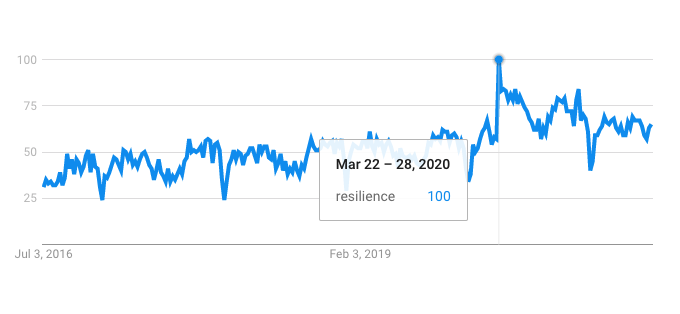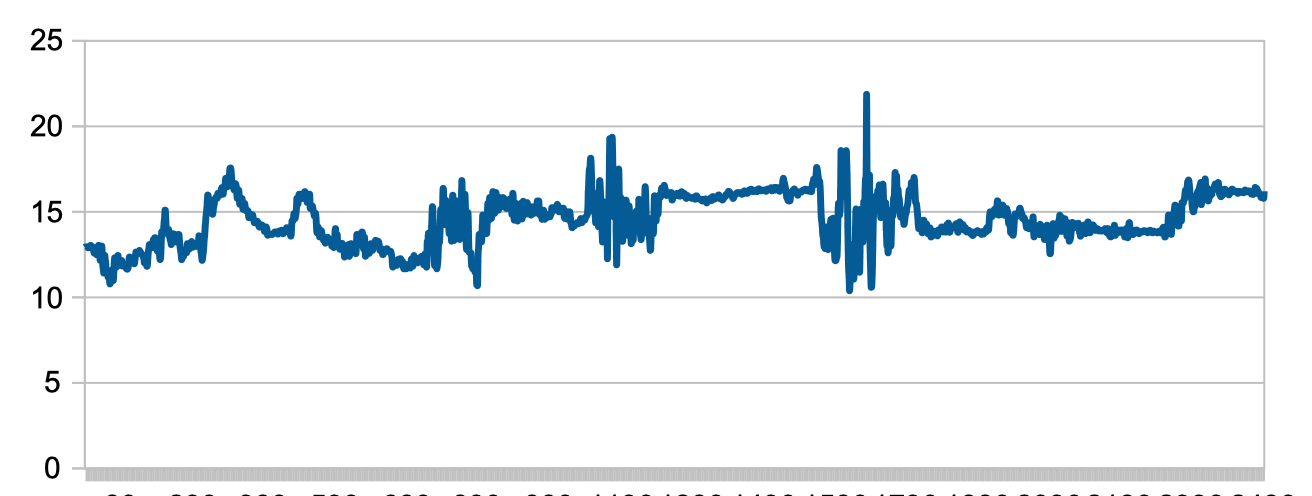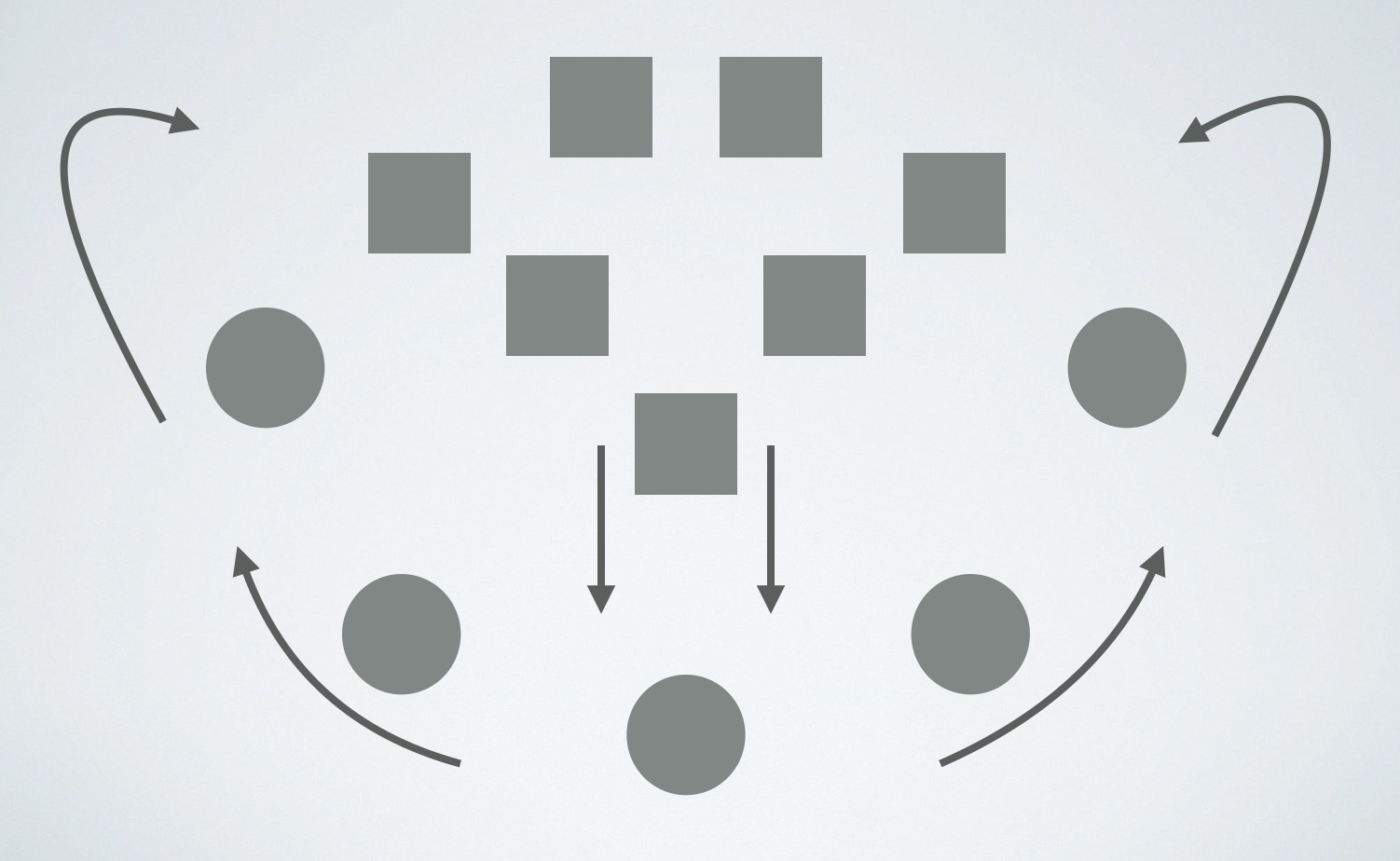Resilience and Adaptability as Sympoietic Practices
Resilience is the ability of a system to maintain its form and, at the same time, to be flexible in relation to external impulses. This makes resilience a close relative of adaptability, although the two are not synonymous.
Both terms have been on the rise especially during 2020 [1] as humanity has been facing something that cannot really be called a catastrophe (otherwise “flexibility” and “adaptability” become irrelevant), and yet called for a certain amount of considerable change.

Resilience might sound a bit more physical than adaptability, but where resilience pushes back, adaptability transforms itself into something different. Although both concepts have multiple webs of relations that they bring along and we will try to unfold them carefully, along with the physical and material metaphors they bring into play.
It’s not possible to be resilient on one’s own (is anything?), but it is also not necessarily a collective phenomenon. There is always a network of relations at play, which can be with the world, with the others, with the environment, but also — technology, one’s own thoughts, emotions, and even personal demons. Resilience and adaptivity can both be seen as sympoietic processes exactly because they involve a whole web of dynamic relations.
Resilience can be approached in many different ways. What makes one more resilient? What are the causes or the external impulses that provoke this resilience? How can resilience be disrupted? Finally — is resilience such a good concept? What effect the resilience of a certain system will have on the environment? How will it affect other species? How does short-term resilience affect the long-term outcome? In other words, sometimes it may be more interesting not to be resilient, just to finally let things change.
We should also divorce the concept of resilience from the productivity narrative. The concept is too often associated with business objectives or surviving a crisis to reemerge as a Phoenix, but that not necessarily what we are after.
It is also important to not only focus on how to be more resilient, but also how to be less resilient, how not to be resilient at all (adaptive?), and how to provoke, challenge, and disrupt resilience. We can then approach the subject in its polysingularity.
Ways of Resilience
The primary operation of resilience is its ability to respond to an incoming impulse with a temporary change and a subsequent return to the original shape (or something close). In other words, “a jump back”, according to an etymological dictionary — a good source for concrete embodied metaphors.
In this way, resilience is one of the different strategies that may emerge as a result of interaction between two (or more) flows. These are:
- Synchronization (tuning in the frequency, going with the flow)
- Amplification (e.g. through resonance)
- Disruption (generating distrurbances)
- Resilience (through deflection)
A fluid motion visualization below, made using an open-source tool by Pavel Dobryakov [2], exemplifies those ideas and shows how each of the strategies would be implemented in the physical realm:
In order to be able to change, one has to be receptive and that sensitivity is where resilience touches upon adaptability. Studies have shown that the systems that are most adaptable will have a high degree of dynamic variability in their organization [3] [4] [10]. That means that they are always changing and the nature of this change is similar across all scales: no matter how close (small) or how far (big) we look. This is also what’s referred to as fractal variability — a sort of “ideal” case, where a system is in a critical state between being predictable and being chaotic, enabling it to maintain a state of non-equilibrium stability. Always changing, but robust and maintaining integrity on every scale.
The state of fractal variability is a natural state of a person who is standing upright in a relaxed posture [5]. It is also present in the dynamics of heartbeat, brain activity, animal foraging patterns, water level fluctuation in rivers, formations of landscapes, interactions of species, and patterns of trees [4] [6] [7].

So, one of the ways to be resilient is to practice fractal variability. It can be done on the level of physical movement, cognition and perception, social interactions, and interactions with the environment, technology, algorithms, and other species.
At the same time, an increased level of rigidity or softness will make a system not so resilient and may lead to its collapse or permanent transformation (or to the collapse of another system that is trying to affect it — whichever is stronger). To push back or to resist, therefore, may be an effective strategy, but the power here is often in numbers. To let go may also be an effective strategy, but it depends on what the effect could be.
Both rigidity and softness can be used to modulate the dynamics of resilience. In fluid dynamics, both parameters can be described with the term viscosity. To push back in order to escalate temporarily (increase viscosity) and to then let go (decrease viscosity), letting an incoming impulse fall into its own intention. To let go in order to deescalate the strength of the incoming impulse, to create a crevice in the intention, and to encircle it to push back (the latter is a strategy of “feigned withdrawal” used by the military).

On the opposite side of the process is the intention and its attempt to break through. What are the strength and the momentum needed for a certain combination of rigidity, softness, and resistance to emerge? One of the possible ways to disrupt a resilient system is through a sustained repetition of effort (perseverance).
Assimilation and Repulsion
Physically, resilience can be described as a combination of assimilation and repulsion. An incoming impulse has to be received at first, felt through, integrated into the system, and then it can be repelled back into the environment after its initial momentum has subsided, redirected, or dissipated.
This is what makes resilience a very accommodating concept. It also proposes a convivial approach: we are not rejecting something straight away. Rather, we are allowing it to enter our system, even if it may be slightly detrimental (reducing the damage), in order to then push it back. There is a certain degree of collaboration and sympoietic creation involved.
During the process of assimilation, a system may “consider” the incoming impulse something that it cannot cope with or rather a welcoming change. In which case, it may decide to adapt to the transformation and not come back to the original shape.
Regeneration
After the initial encounter, once the effects have subsided, a system may find a necessity to recuperate, to repair, to regenerate its dynamic state and energy. The word itself provides a hint of how it could be done: a repetitive action.
The body is already doing it on a daily basis: through breath and heartbeat, but also circadian cycles and involuntary reactions such as laughter or trembling — both help shake off tension through undulations.
Resilience goes hand in hand with regeneration and even if there is a state of total collapse, one can still recover by introducing periodic dynamics into a process. For instance, fast breathing can help athletes or dogs to recover, a clear sinus wave can help an electronic device, an incantation can help build a spirit, repetitive movement patterns help for survival [11], and economic cycles can help bring stability in the long term.
Resilient Multiplicies
So far we have been discussing resilience from a somewhat material and physical perspective. A similar approach can be applied to various sorts of multiplicities, such as networks (of people or actors) and knowledge structures (e.g. a discourse represented as a network).
A network, at its core, is comprised of some parts (the nodes) that are interacting (the edges). When we talk about the resilience of a network, there are two scenarios that we would normally consider:
- Resilience against a targeted or random removal or breakdown of nodes
- Resilience against propagation (infection, fad, information)
In both cases, the regenerative part is the ability of the network to perform its function even if its structure is perturbated (either through the damage or propagation).
Studies have shown that the most resilient network (in both cases) is the one that has a distinct community structure: that is, there are distinct clusters of nodes that tend to interact within groups, but there is also a global ongoing interaction between these groups as well [8] [9]. A regenerative process can also be in place, where the formation of the groups is constantly changing, that is, the most influential (better connected) nodes are pushed to the periphery, while the peripheral ones go into the center. Regeneration through the dynamic exclusive inclusivity.

At the same time, sometimes it may be not desirable to have a resilient structure, but, rather the one that can quickly adapt and regenerate, propagate information in quick waves or trends. For example, this is typical for innovative communities or closely-knit groups of collaborators, where there are no hubs and where everyone is connected to everyone else. Such networks may be more susceptible to a transformative event, but they may be faster in synchronizing.
References
[1] Google Trends for the search query “resilience”, retrieved 27th June 2021: https://trends.google.com/trends/explore?date=today%205-y&q=resilience
[2] WebGL fluid visualization: https://paveldogreat.github.io/WebGL-Fluid-Simulation/
[3] Stergiou, N., & Decker, L. M. (2011). Human movement variability, nonlinear dynamics, and pathology: is there a connection?. Human movement science, 30(5), 869–888. https://doi.org/10.1016/j.humov.2011.06.002
[4] Bak, P., Tang, C., & Wiesenfeld, K. (1987). Self-organized criticality: An explanation of the 1/ f noise. Physical Review Letters, 59(4), 381–384.
[5] Yamada, N. (1995). Chaotic swaying of the upright posture. Human movement science.
[6] J M. Hausdorff, P. L. Purdon, C. K. Peng, Z. Ladin, J. Y. Wei, and A. L. Goldberger (1996) Fractal dynamics of human gait: stability of long-range correlations in stride interval fluctuations. Journal of Applied Physiology, 80:5, 1448-1457
[7] Rabinovich MI, Huerta R, Varona P, Afraimovich VS (2008) Transient Cognitive Dynamics, Metastability, and Decision Making. PLOS Computational Biology 4(5): e1000072. https://doi.org/10.1371/journal.pcbi.1000072
[8] Watts, D. J., & Strogatz, S. H. (1998). Collective dynamics of ‘small-world’ networks. Nature, 393(6684), 440–442.
[9] Kuperman, M., & Abramson, G. (2001). Small World Effect in an Epidemiological Model. Physical Review Letters, 86(13), 2909–2912. http://doi.org/10.1103/PhysRevLett.86.2909
[10] Kitano, H. (2004). Biological robustness. Nature Reviews. Genetics, 5(11), 826–37
[11] Gonzales, L (2017). Deep Survival: Who Lives, Who Dies, and Why




